

In August 1942, more than 2,400 Jews were marched from Shumsk's
wartime ghetto
to pits dug close to the banks of the Vilia River, where they were shot
by a German Einsatzgruppe unit with support from Ukrainian
collaborators. Most Jews in Volhynia were killed in this manner, rather
than being deported to extermination camps. For more information on the Nazis' murder of Jews in western Ukraine,
consider reading Father Patrick Desbois' books The Holocaust by Bullets and In Broad Daylight. You may also read the 1944 report
on the mass killing in Shumsk issued by the Extraordinary State
Commission to Investigate German-Fascist Crimes Committed on Soviet
Territory, made available by the Kremenets District Research Group. And
Yad Vashem has an informative page on the murder of the Jews of Shumsk here.
The photograph below, from page 312 of the Shumsk Yizkor Book, is of a group of Jews originally from Shumsk visiting the site of the mass grave in September 1956. The adults pictured are, from left, Moshko and his wife, Sasha; Sara Chusyd and her husband, Avraham Chusyd; a Polish military officer who accompanied the visitors; Sarka Berensztejn-Fiks; Shalom Krakoviak and his wife; and Shmuel Shafir and his wife. The children are the Chusyds’ son and the Krakoviaks’ daughter Ora.
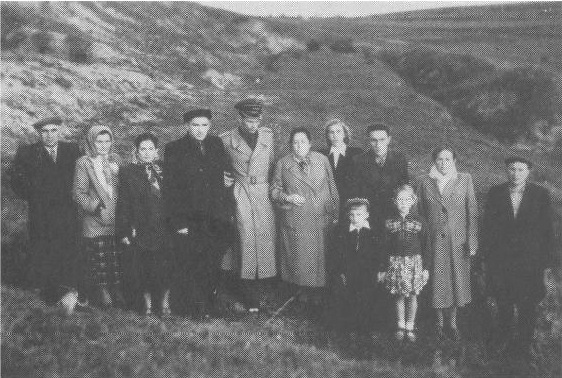
In 1991 a memorial to those who were killed was installed through cooperation between local authorities in Shumsk and a group of Israelis with roots in Shumsk. In a wooded area, it has at times become overgrown. The memorial at the site was cleaned up in 2006, and a new marker was installed. Another cleanup was completed in 2017. Click here for photos and more information (many thanks to Lynne Tolman). The images below reflect various phases during the past three decades.
The memorial following a 2023 cleanup (pictures from Shumsk Museum Facebook page):
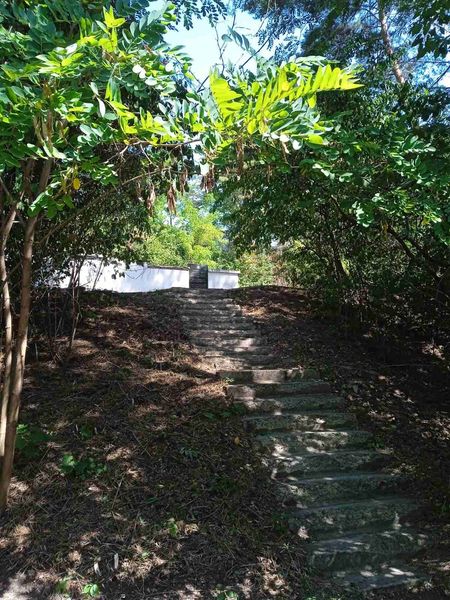
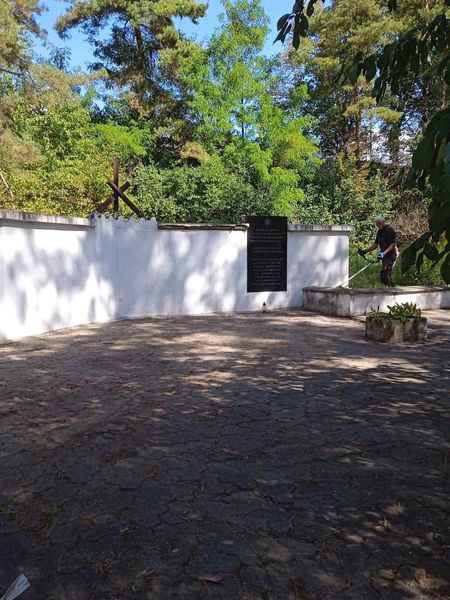
Shumsk residents helping with a cleanup in 2023 (THANK YOU FOR YOUR EFFORTS!!):
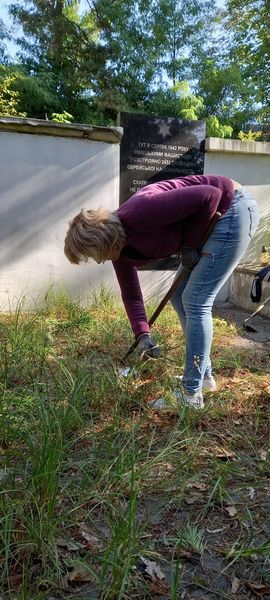
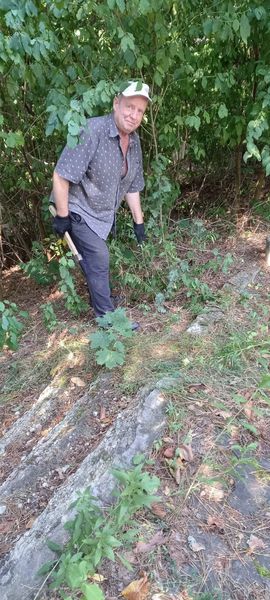
The memorial following a 2017 cleanup:
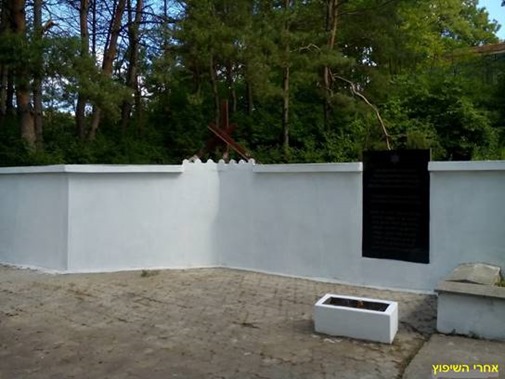
Here are photographs of the memorial as it looked in 2009, taken by Ann Roman.
Below is an account of Howard Freedman's visit in 1999, before the memorial's restoration:
My translator, driver, and I were brought along a long and unmarked path to the mass grave by two elderly Ukrainians whom we happened to run into as we were searching for the site. Both had witnessed the liquidation of the Jewish ghetto and execution of the city's Jews.
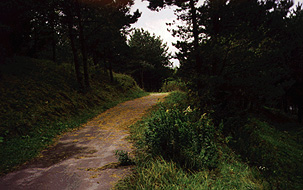
This is the forested path walked by Shumsk's Jews from the town's ghetto to their death. It was paved when a memorial was established at the execution site.

This man had witnessed the killings
from the fields adjacent to the site. He stated that, once covered,
the pits rumbled with the movement of those who were still alive for
days.
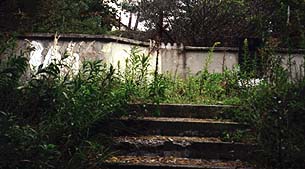
At the time of my visit, the memorial erected to the dead at the execution site was badly overgrown.

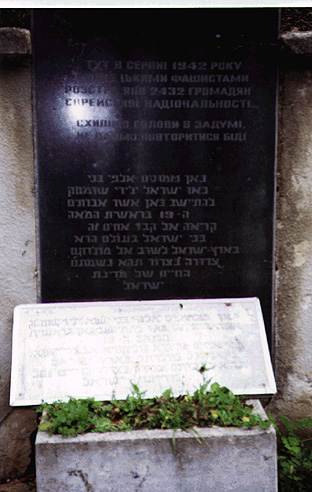
A memorial stone in Ukrainian and Hebrew was created several years ago.